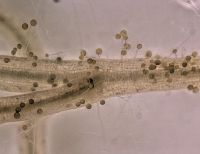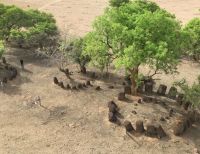In research published today in the journal PLOS ONE, scientists say that monitoring the response of these birds to climate change will be crucial for validating the predictive ability of widely used climate models. It will also help conservationists come up with effective ways of preventing other species from going extinct in the wild.
Intensive conservation measures, such as assisted migration and captive breeding, may be the only options available to safeguard these two Ethiopian bird species now that climate change has sealed their fate in the wild. The new understanding of the birds’ ranges will help to develop conservation management plans for them in the newly formed Yabello National Park in Ethiopia.
“To find that two species are both limited by temperature at every edge of their global distribution is really quite remarkable,” said Dr Andrew Bladon in the University of Cambridge’s Department of Zoology, first author of the study.
“These completely unrelated species are influenced very similarly by aspects of the local climate. As the temperature rises due to climate change, they will struggle to survive.”
The scientists looked at the impact of a range of future climate change projections from the Intergovernmental Panel on Climate Change (IPCC), from the ‘best case scenario’ in which concerted climate action causes carbon emissions to peak in 2030 before declining, to a ‘worst case scenario’ with no change in carbon emissions driving a 3-5 degree average global temperature rise by the end of the century.
They found that in all scenarios, using a range of modelling approaches, both species are at severe risk of extinction in the next 50 years as the climate is predicted to become unsuitable for their survival in 68-84% (for the Swallow) and 90-100% (for the Bush-crow) of the birds’ current ranges.
Temperature affects the foraging ability of the Ethiopian Bush-crows, so once their range gets too hot the scientists expect them to start disappearing quickly – if they can’t feed, they can’t survive.
The mechanism by which warming causes the decline of the White-tailed Swallows is not known, but the team think it may affect the birds’ breeding success.
















